Introduction
Restructuring a business can be a complex and challenging endeavor, but with the right approach, it can lead to transformative results. In this article, we will explore the key strategies and best practices for successful turnarounds, providing practical advice and solutions to CFOs and business leaders. From assessment and diagnosis to stakeholder engagement, strategic repositioning, financial restructuring, operational excellence, leadership and team alignment, monitoring and adaptation, to measuring progress and success, we will delve into each aspect of the restructuring process.
Drawing inspiration from real-world case studies and industry insights, we will showcase how businesses can navigate these turbulent times and position themselves for long-term success. So, let's dive in and discover the roadmap to a successful business turnaround.
Assessment and Diagnosis: Understanding the Current State
For a business navigating the complex terrain of restructuring, a meticulous assessment is pivotal. This process encompasses a comprehensive financial review, operational analysis, market positioning, and scrutinizing other vital aspects. By delving into the intricacies of each challenge and recognizing potential avenues for growth, leaders can craft bespoke strategies poised to enhance performance.
An example of this approach in practice is the creation of "history books" by organizations such as municipal utilities. These documents chronicle significant events related to assets, detailing the what, when, why, where, how, by whom, and associated costs. Such meticulous record-keeping, which includes contracts and job descriptions, as well as summaries of annual activities, provides valuable insights for both current and future staff.
In the case of Wallace-Woodworth, a rural municipality in Manitoba, the implementation of a formal asset management policy and an asset registry for infrastructure components like roads and culverts proved instrumental. The process illuminated the importance of retaining critical knowledge, which could otherwise be lost with staff turnover, and bolstered the municipality's confidence and direction in asset management.
These examples underscore the significance of treating transformation as a continuous process rather than a finite project. As advocated by psychologist Kurt Lewin, successful change involves recognizing the need for change, transitioning towards new behaviors, and solidifying those behaviors as the norm. This philosophy is particularly resonant in today's dynamic business environment, where companies must remain in perpetual transformation to thrive.
To initiate a restructuring plan, executives should identify three to five critical areas that could significantly impact the organization. These areas may involve performance reviews, budgeting, key performance indicators, decision-making processes, and the roles of pivotal individuals. Regular practice and flexibility in these domains are essential for adapting strategies as circumstances evolve.
In the broader context of business, the end game is not merely profit maximization but value creation. This objective guides all aspects of corporate finance, from investment choices to financing strategies to shareholder returns. Particularly for growth-oriented companies, short-term profits may be sacrificed for long-term growth prospects.
This philosophy is evidenced by companies in technology and green energy sectors that prioritize scaling over immediate profitability.
In summary, an expert, action-oriented approach to restructuring necessitates a holistic and adaptable strategy that continuously evolves in response to internal and external changes. By methodically assessing and documenting the current state of affairs, and by learning from practical examples like Wallace-Woodworth, businesses can position themselves for a successful turnaround.
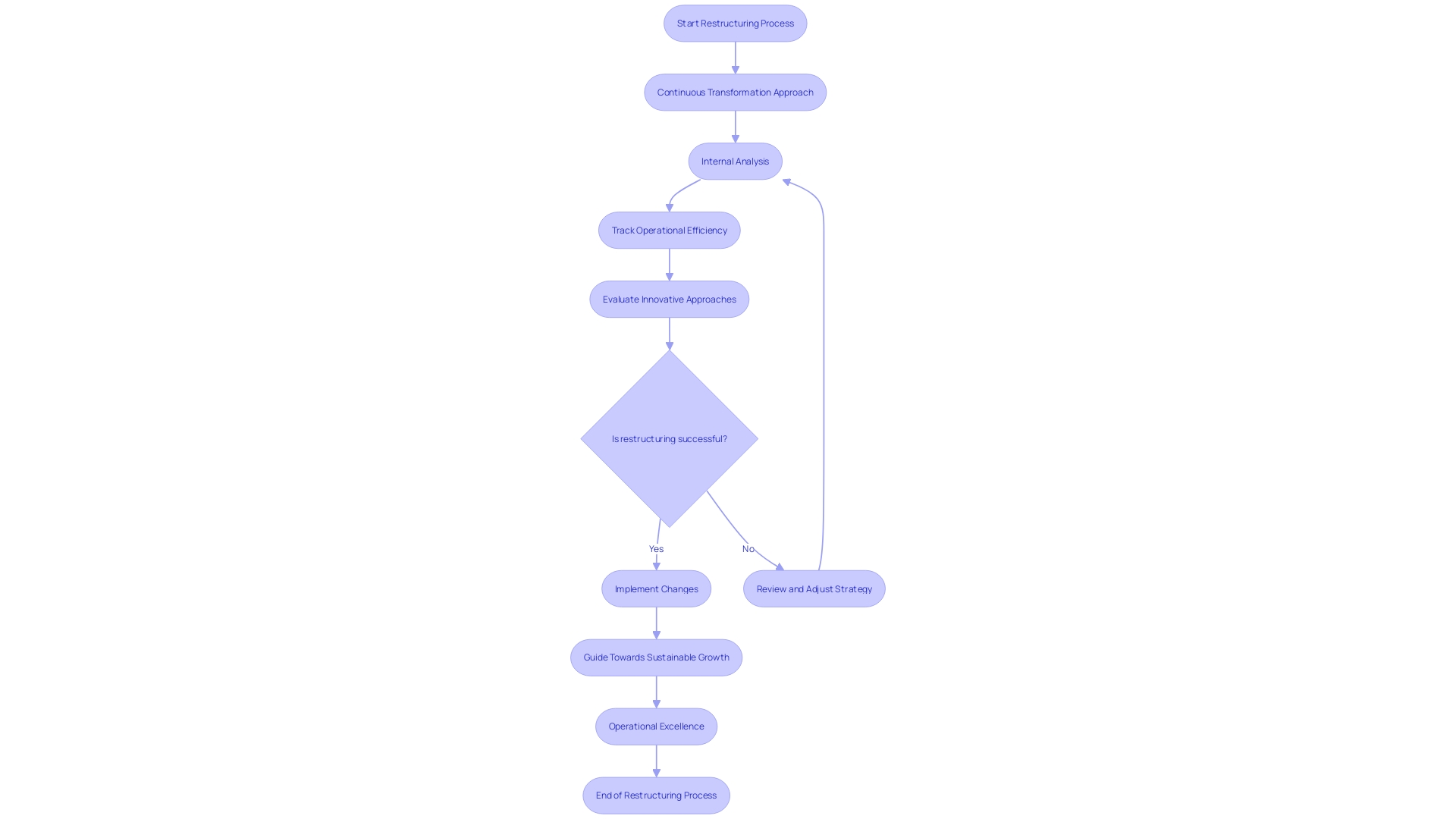
Stakeholder Engagement: Building Support and Trust
A compelling example of successful restructuring can be seen in the journey of Stora Enso, a company with a rich history dating back to 1288. As the demand for paper dwindled, newsprint production plummeted from 12% to less than 4% globally over two decades. Stora Enso's bold move to transform into a renewable materials enterprise illustrates the critical importance of stakeholder engagement in a turnaround strategy.
They laid off over a third of their workforce and appointed a new CEO to navigate the company towards profitability, focusing on renewable materials in response to emerging market trends. This strategic pivot not only required internal changes but also the support from partners downstream in the value chain. Through developing innovative products like sustainable building materials and plastic drinkware alternatives, Stora Enso not only adapted to market forces but also actively shaped them.
In the context of today's interconnected world, stakeholders wield considerable influence over a company's success. A viral tweet or a social media campaign can have lasting impacts on a business. Companies like Stora Enso understand that stakeholders are not just risks to be managed but opportunities for enhancing credibility, strategic planning, and competitive advantage.
Engaging stakeholders is not just about managing immediate risks but about building coalitions to address broader sustainability challenges. This is evidenced by Stora Enso's collaboration with stakeholders which enabled them to steer the company toward long-term sustainability goals.
Moreover, recent findings indicate that companies often lose potential value during transformation efforts, especially in execution. Success in such endeavors is underpinned by elements like will - an ambitious, shared vision; skill - the collective capabilities and individual competencies within the organization; rigor - the performance infrastructure that allows disciplined execution; and scope - the breadth of outcomes targeted for improvement. Stora Enso's ability to redefine its core business in the face of declining demand for its traditional products serves as a testament to the effectiveness of these principles in action.
In short, successful restructuring demands not just internal resolve but also the deliberate engagement of stakeholders to foster a shared commitment to the vision. It's a collaborative effort that, when executed with precision and foresight, can revitalize a company and position it for future success.
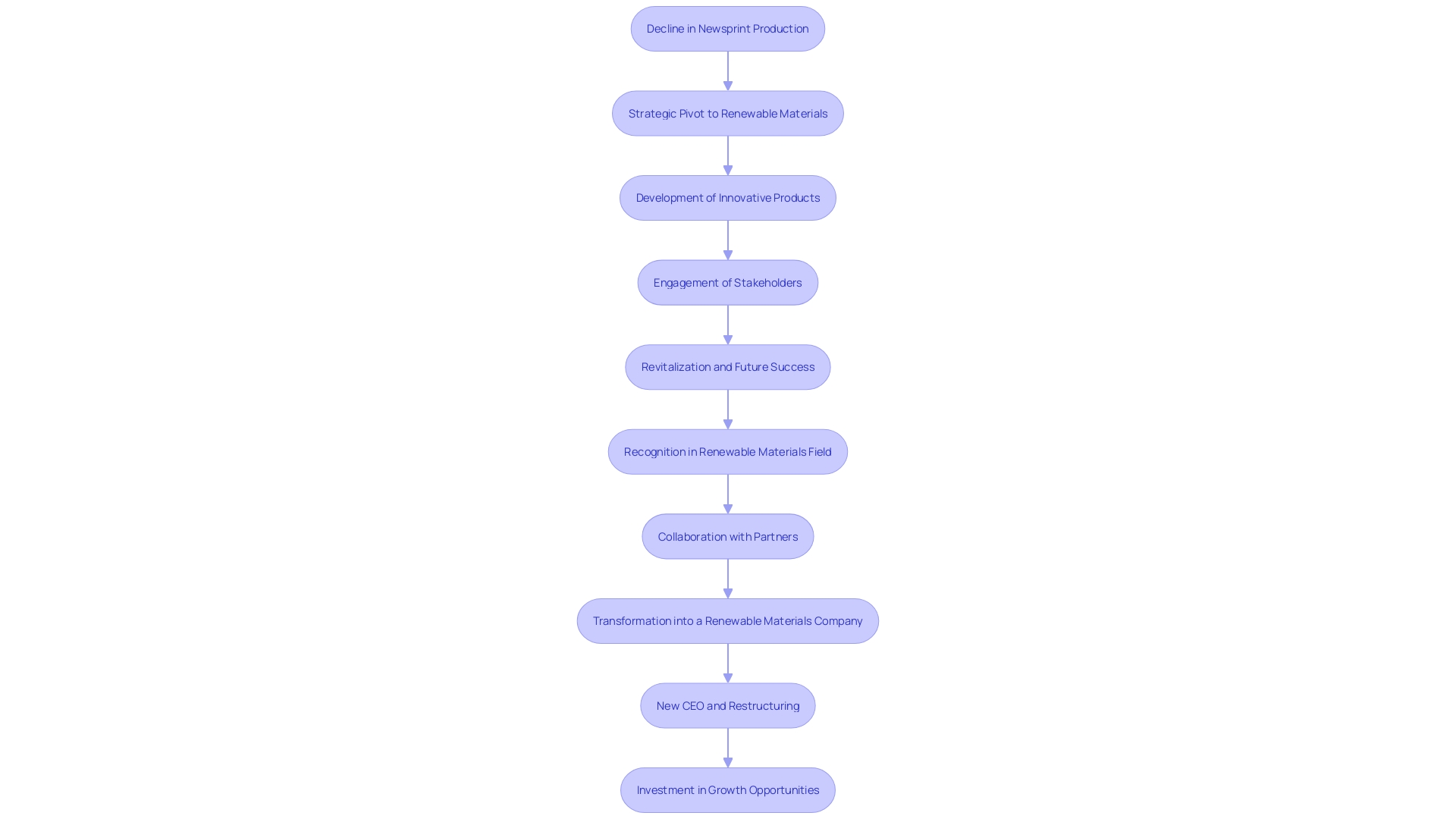
Strategic Repositioning: Aligning with Market Realities
Strategic repositioning is a crucial maneuver in the art of corporate resurgence. It's a deliberate shift in a company's operations, offerings, and resources to resonate with the ever-evolving market dynamics and consumer expectations. By dissecting market trends, evaluating the competitive terrain, and grasping the nuances of customer desires, companies can uncover fresh avenues for growth.
This is not just about changing direction but about crafting a robust value proposition that places the company back in the vanguard of competition.
The business landscape is littered with examples underlining the perils of stagnation. Take Xerox, a brand once so dominant that its name became a verb for copying documents. Despite pioneering groundbreaking technologies like the graphical user interface and ethernet at its Palo Alto Research Center, Xerox didn't pivot when the digital wave transformed the industry, resulting in a staggering decline from a market cap of $36.3 billion in 1998 to a mere $1.63 billion more recently.
In contrast, Envision Healthcare's tale is one of triumph through transformation. Post-restructuring, the company has emerged with significantly reduced debt and a refined operating model that's positioned to catalyze patient and partner success, embodying the quintessential comeback story.
The data speaks volumes about the imperative of change. For instance, a 2024 report on the state of business reveals that 88% of companies in China are profitable, with 46% meeting budget expectations. Such statistics underscore the importance of foresight and flexibility in corporate strategy.
Indeed, as the adage goes, predicting the future is no small feat. But for businesses, it's not about clairvoyance—it's about vigilance. It's about interpreting signals—diminishing sales, dwindling market share, or customer feedback—as harbingers of necessary change.
By focusing on customer behavior and adapting accordingly, businesses can navigate through uncertainty and emerge stronger.
Financial Restructuring: Achieving Stability and Sustainability
Financial restructuring is more than a lifeline for businesses facing challenging times; it's a strategic move that fosters resilience and positions a company for future success. This process entails a thorough audit of the company's financial health, identifying areas where debt can be reduced, contracts renegotiated, cash flow optimized, and financial controls bolstered. For instance, WeWork's recent emergence from Chapter 11 showcases how a well-executed restructuring plan can revitalize an organization.
The company's initiative to reduce its debt and renegotiate leases exemplifies the proactive measures leaders must take to steer their businesses toward sustainable growth and operational excellence. Adopting innovative strategies, such as those implemented by TBC Bank during its agile transformation, can reduce organizational complexity, enabling growth and enhancing digital product delivery times. Similarly, Bird's collaborative approach with city partnerships illustrates the significance of aligning business operations with community needs, thereby securing the company's place in the future of eco-friendly transportation.
The key is to assess operational efficiency, financial performance, and marketing effectiveness continually. By analyzing financial statements in detail, leaders can pinpoint strengths and weaknesses, guiding strategic decisions for resource allocation and investment. As a result, companies that navigate restructuring effectively can emerge stronger, gaining a reputation for being well-managed and laying the groundwork for long-term success in a post-disruption economy.
Operational Excellence: Streamlining Processes and Workflows
To ensure a successful restructuring process, organizations must prioritize operational excellence. Delving into the intricacies of current procedures, highlighting inefficiencies, and enhancing workflows are critical steps. Such efforts lead not only to greater efficiency but also to cost reductions and improved overall performance.
For instance, consider the approach of Travel Charme Strandhotel Bansin, where the integration of technology solutions played a pivotal role in streamlining hotel operations, yielding tangible benefits in guest services and internal management.
To maintain relevance and prevent processes from becoming outdated, a dynamic, living model for ongoing process optimization is essential. This involves addressing the trifecta of obsolescence sources: market competition, technology advancements, and employee expectations. A proactive stance, akin to the Open Market Rules applied by industry leaders, can drive functional operations to deliver services that rival external offerings.
For example, Apple's customer-centric approach, which is grounded in understanding customer needs and continuously evolving product offerings, mirrors the kind of dynamic leadership necessary in process transformation.
A commitment to transformational change is fundamental. It transcends minor adjustments, potentially encompassing new technologies, process restructures, or even cultural shifts. An organization's ability to adapt to transformational change hinges on its willingness to adopt new operational mindsets and practices.
This commitment is underscored by companies like Rockwell Medical, which leveraged strategic acquisitions to expand its service network, thereby improving operational margins through shared expenditures.
Moreover, to navigate the complexities of restructuring and operational enhancement, companies must build a management system that reinforces desired behaviors and principles. This entails refining technical systems for value delivery to eliminate waste and applying technology to augment human capabilities. Implementing mechanisms to resolve product and platform dependencies is also crucial, as it allows for smoother operations and minimizes cross-team friction.
In conclusion, the pursuit of operational excellence in restructuring scenarios is not a one-off endeavor but a continuous journey requiring a strategic blend of innovation, cultural adaptation, and proactive market engagement. By following these guiding principles and learning from real-world case studies, organizations can chart a course for sustained success and resilience.
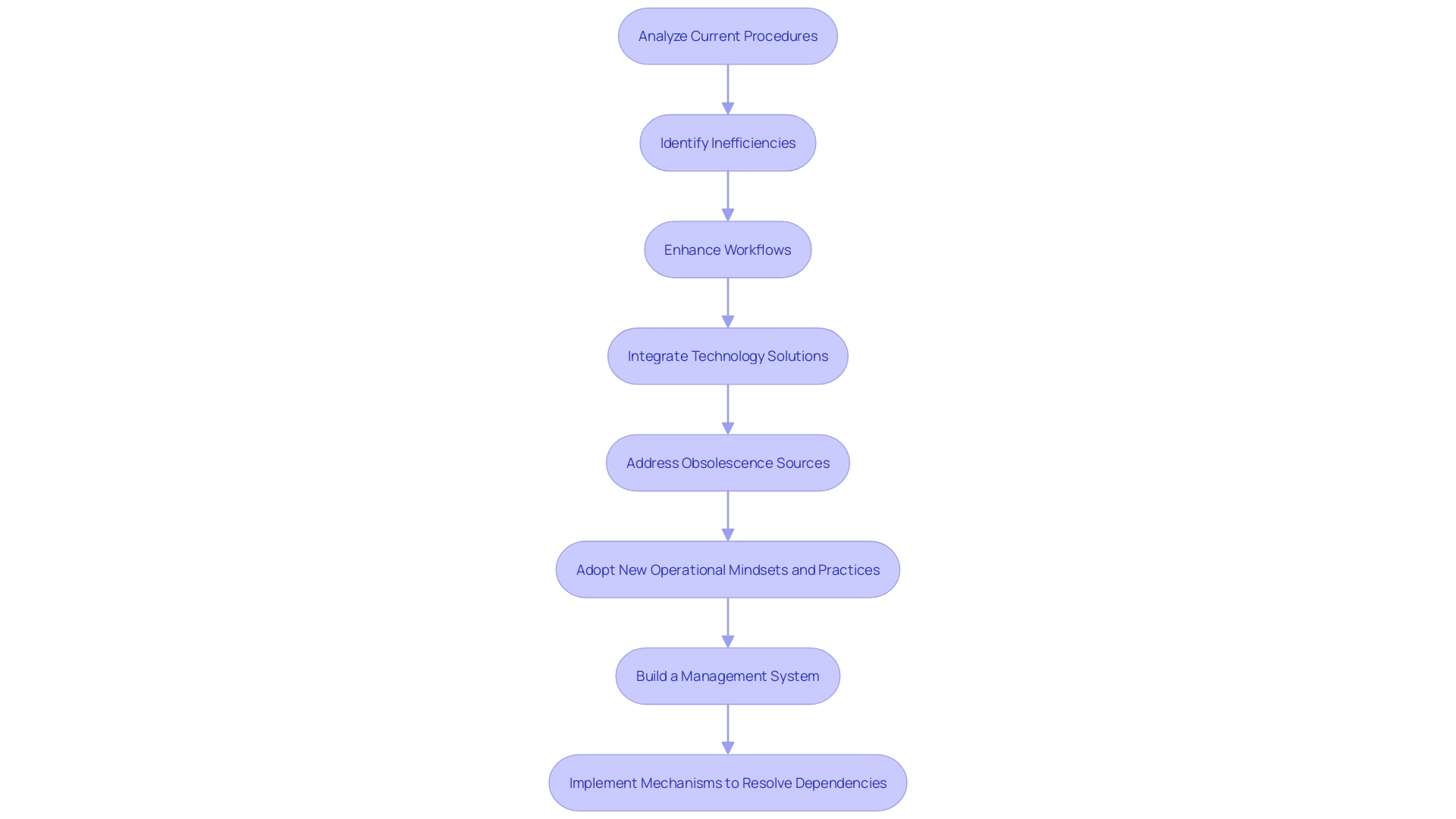
Case Study 1: Technology Giant’s Strategic Shift
Faced with the relentless advance of electronic media and a consequent decline in paper demand, Stora Enso, a Finnish paper manufacturing heavyweight with a storied history dating back to 1288, was compelled to pivot strategically. In the past two decades alone, global newsprint consumption plummeted from 12% to less than 4% of overall paper and paperboard production, signaling a clear need for change. Embracing this challenge, the company embarked on an ambitious journey to redefine itself as a leader in renewable materials.
This transformation was catalyzed by appointing a new CEO and making the difficult decision to reduce the workforce by over a third, demonstrating the company's commitment to a leaner, more focused operation. With a strategic plan to maximize cash flow from existing paper businesses, Stora Enso reinvested in burgeoning opportunities aligned with global trends—particularly the demand for sustainable materials. The company's innovative approach included developing alternatives to plastic drinkware and sustainable construction materials, in partnership with downstream value chain entities.
Stora Enso's efforts to drive systemic change across food and construction markets exemplify the proactive and forward-thinking maneuvers essential for companies to remain relevant and profitable in rapidly evolving industries. This case study not only highlights the necessity of continual business model evaluation but also the potential for revitalization through strategic adaptation to emerging market dynamics and consumer preferences.

Case Study 2: Retail Chain’s Operational Overhaul
The revitalization of Travel Charme Strandhotel Bansin serves as a paradigm for businesses seeking to navigate the complex waters of transformation. As they encountered the challenge of maintaining service excellence amidst peak demand periods, the hotel's strategic initiatives, led by General Manager Greg Smlatic, became the cornerstone of their success. By embracing change as a gateway to opportunity, the hotel optimized its operations through the astute use of technology.
The transformation began with a focus on enhancing the customer experience. Recognizing the value of customer satisfaction, as evidenced by the accolades from the Mecklenburg-Vorpommern Tourist Board, the hotel seamlessly integrated family-friendly amenities, such as a children's club, with the natural allure of its location along the Baltic Sea coast.
Industry analysts have taken note of such successful transformations, understanding that adaptability is key in today's market—a sentiment echoed by retail analyst Natalie Berg, who warns of the perils facing retailers that resist change. This aligns with the broader industry trend, where even major players like Walmart and Target are feeling the impact of store closures on their reputation and customer trust, as described by consumer psychologist Chris Gray.
The case of Travel Charme Strandhotel Bansin is not just a success story but a testament to the pivotal role of technology in restructuring operations for enhanced efficiency and guest satisfaction. Their journey underscores the importance of dynamic leadership and the willingness to invest in change to foster a prosperous future in the hospitality industry.
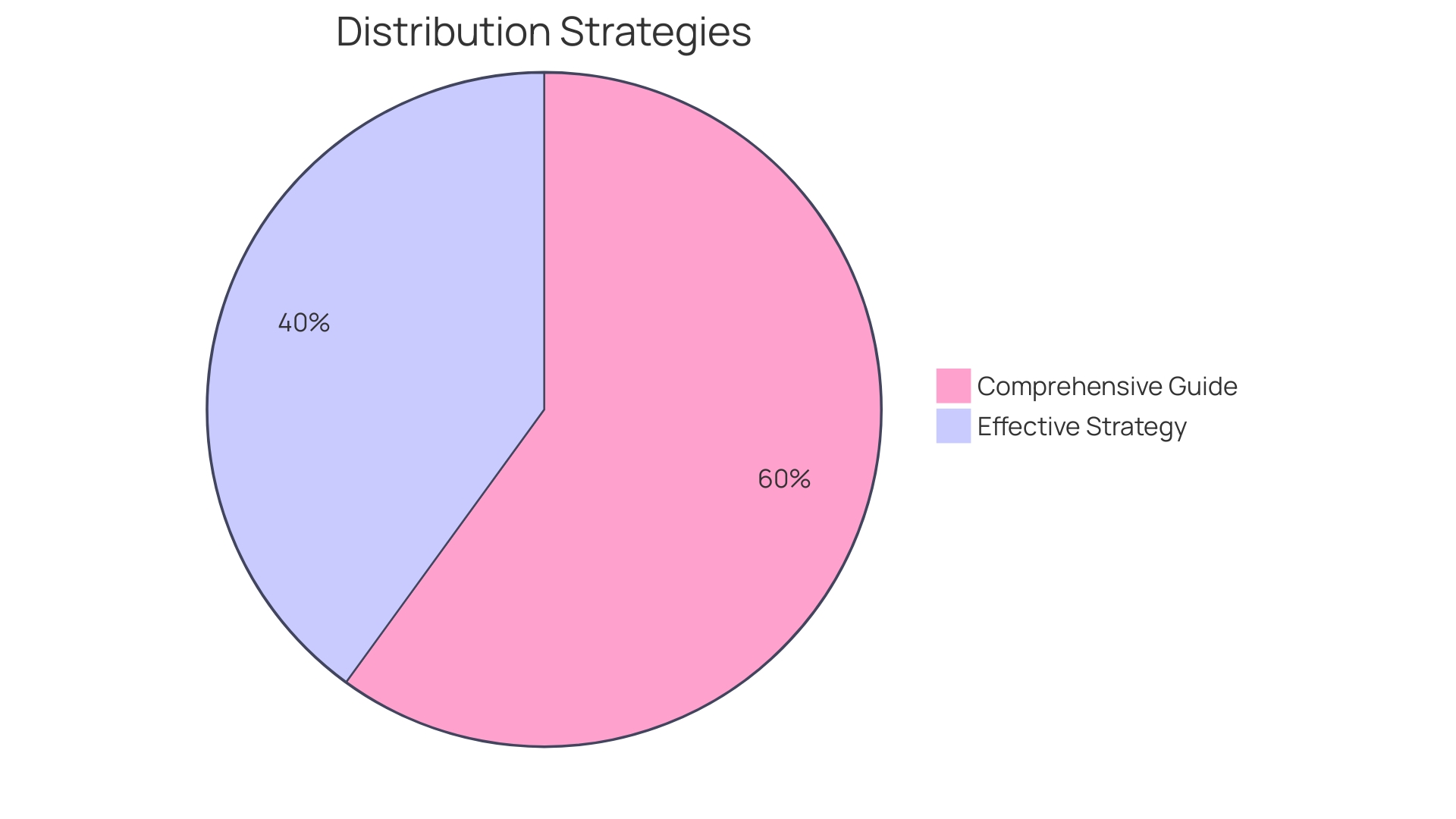
Leadership and Team Alignment: Fostering a Cohesive Workforce
Navigating a corporate restructuring process demands more than just strategic planning; it requires an empathetic and motivational leader who can align and galvanize the team towards a unified goal. Through history, like in the case of Stora Enso, we've seen that transformation is not just about adopting new business models or technologies but also about leading people through the journey. When Stora Enso faced declining demand for paper, they pivoted towards renewable materials, a move that demanded not only a strategic shift but also a cultural one, involving layoffs and new leadership.
Leadership transitions, as seen with iRobot's restructuring, underscore the need to realign strategies and inspire confidence amidst changes. The company's focus on streamlining operations and advancing growth initiatives required a leadership approach that communicated a clear vision and fostered a culture of innovation.
In essence, successful restructuring hinges on leaders who can articulate the necessity of change, create a compelling vision for the future, and instill a sense of ownership and accountability across all levels. This is particularly vital given that, statistically, 70 percent of digital transformation efforts fail. Failure often stems from an inability to communicate the why behind the change, leading to resistance and cynicism.
Therefore, effective leadership in a restructuring context is not just about driving efficiency; it's about inspiring a workforce to embrace and thrive in a new chapter of the company's history, ensuring they understand the opportunities that arise from change and are engaged in the transformation process.

Monitoring and Adaptation: Continuous Improvement and Adjustment
Navigating the intricate path of business restructuring is no small feat. It demands rigorous performance tracking and the ability to swiftly pivot strategies to stay ahead of the curve. Incorporating key performance indicators (KPIs) is vital for gauging progress and pinpointing areas ripe for enhancement.
Agility is the lifeblood of successful restructuring. Take Rivian, for instance; their quest for net-zero emissions by 2040 is a testament to their commitment to continuous evolution. This forward-thinking approach is necessary to achieve sustainable processes and performance improvements.
Rivian's story highlights the importance of being responsive to change and embedding environmental considerations into corporate strategy.
Research involving 127 companies worldwide sheds light on the significance of true agility. A staggering 94% embarked on agile initiatives, but only 53% genuinely embraced the transformative power of agile methods, reaping substantial benefits like a 15% to 20% reduction in delivery costs and a twofold increase in shareholder returns. This underscores the necessity for businesses to go beyond superficial adoption of agile practices and truly integrate them into their culture and operations.
An action-oriented mindset is crucial. As Mathew Lehnig, a retired Navy SEAL officer, emphasizes, "During business reorganization, constant change is inevitable. Although uncertain and complex, we must remain agile and adaptable to ensure the desired outcomes."
This philosophy is about more than just navigating change; it's about making agility an integral part of strategic planning.
Moreover, the statistics are telling: a mere 7% of companies fall into the category of Dynamic Organizations, illustrating a marked departure from traditional, hierarchical structures towards a model that prizes adaptability and continuous transformation. A dynamic approach, as pursued by companies like Orsted, can lead to revolutionary shifts in business models and outcomes, like the remarkable transition from 85% reliance on fossil fuels to an 85% investment in renewable energy.
In essence, to drive business success through restructuring, it's imperative to foster a culture that prizes continuous improvement and has the resilience to adapt to ever-shifting market dynamics.

Measuring Progress and Success: Key Performance Indicators (KPIs)
In the dynamic landscape of business turnarounds, establishing and monitoring Key Performance Indicators (KPIs) is a cornerstone of strategic management. As highlighted by Harvard Business School professor Robert S. Kaplan and business theorist David Norton, PhD, the balanced scorecard is a vital tool that provides a comprehensive view of an organization's performance. It encompasses four perspectives: financial, internal business, innovation and learning, and customer.
Each angle is defined by strategic goals and associated KPIs that offer a multi-dimensional approach to measuring success.
For instance, the financial perspective might include KPIs related to profitability or cost reduction, while customer metrics might focus on satisfaction or retention rates. In a practical setting, a restaurant's strategy to leverage its central location to boost food and beverage sales would necessitate KPIs that measure market understanding and sales growth, as seen in successful real-world applications.
Moreover, in a volatile business environment marked by layoffs, such as the recent workforce reduction at General Motors, operational efficiency becomes even more critical. KPIs serve as navigational instruments that guide leaders through transformations, enabling them to make informed decisions and adapt to changes effectively.
As businesses face the continuous pressure of transformation, treating it as an ongoing process rather than a one-time event is crucial. This philosophy is rooted in the 'unfreeze-change-refreeze' model by psychologist Kurt Lewin, which has evolved into recognizing the need for perpetual adaptation. KPIs are integral to this process, providing a continuous feedback loop that informs strategy and operations.
The significance of KPIs extends beyond financial metrics, aligning with the triple bottom line approach that includes profit, people, and planet. This holistic view acknowledges the role of businesses in driving positive change while maximizing shareholder value. Engaged employees, as underlined by the use of tools such as eNPS and OKRs, directly contribute to productivity and, by extension, the overall success of the corporation.
In conclusion, KPIs are indispensable for any business aiming to navigate the complexities of restructuring and achieve sustained success. They encapsulate the essence of data-driven decision-making, with the power to transform insights into actionable strategies that propel businesses forward.
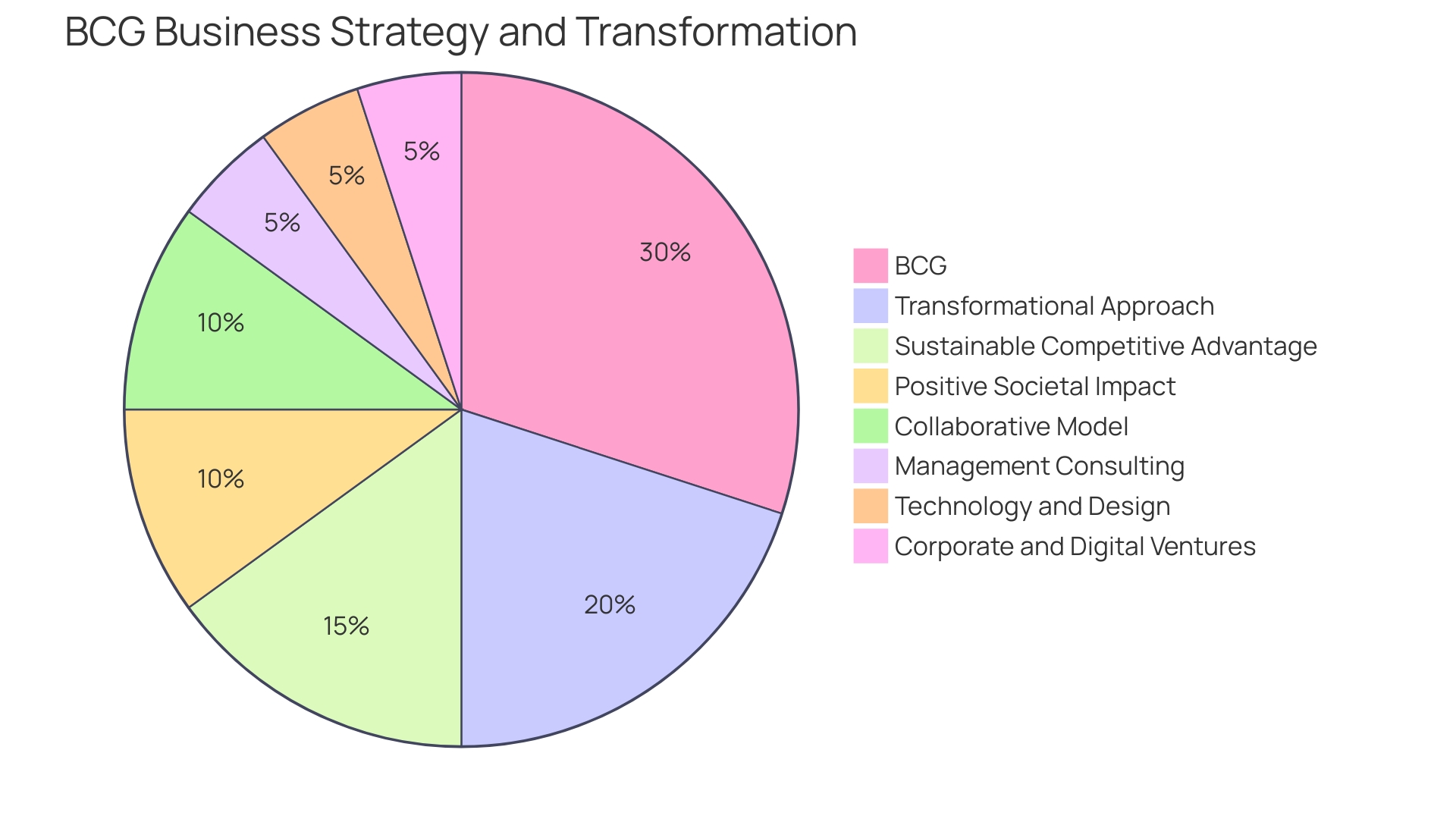
Lessons Learned and Best Practices for Successful Turnarounds
As business landscapes evolve, companies often face the need to navigate through restructuring and turnaround processes. Drawing inspiration from the Guthrie Clinic's holistic approach to healthcare, which integrates physical, emotional, and social well-being into patient care, businesses too must adopt a multi-faceted strategy. This involves not only enhancing operational efficiency but also ensuring the organization's transformation resonates with the market's pulse and customer expectations.
The story of a major branded hotel, which initially struggled to increase its Food & Beverage sales despite a prime location, underscores the necessity of market awareness. The hotel's turnaround was achieved by leveraging its location to attract more diners, a strategy rooted in understanding and responding to the local market dynamics. Similarly, businesses must recognize the importance of location and market trends in their restructuring efforts to drive growth and customer engagement.
In times of uncertainty, companies that emerge as well-managed and profitable gain a competitive edge. Executives should align their actions with long-term goals, considering pivotal investments and divestments, technology integration for enhanced efficiency, and the use of forecasting tools for deeper business insights. Such was the case with Rite Aid Corporation's restructuring plan, which addressed significant debt reduction and increased financial agility, enabling the company to maintain its commitment to health outcomes and customer service during its Chapter 11 process.
Transformation should be viewed as a continuous journey rather than a finite project. Following the unfreeze-change-refreeze model, it's vital to create an awareness of the need for change, move towards new behaviors, and solidify these behaviors as the norm. This approach is particularly relevant in today's dynamic environment, where constant adaptation is key to success.
Lastly, reflecting on the wisdom of industry leaders like Willis Johnson and Jay Adair of Copart, who expanded a single junkyard into a global enterprise, businesses should continuously monitor their business models and adapt skillfully to challenges. Such vigilance and agility are fundamental to navigating the complexities of restructuring and achieving a successful turnaround.
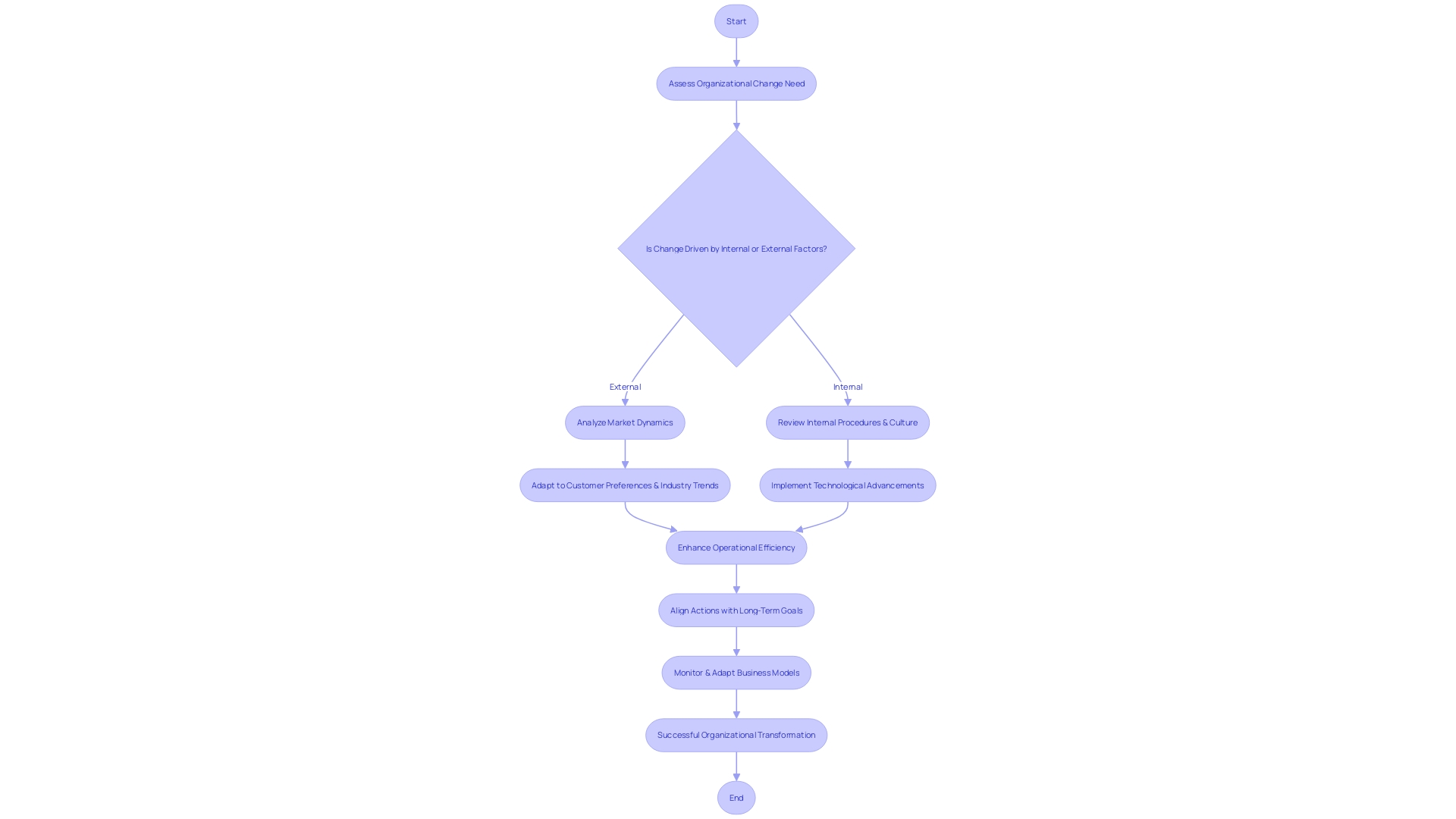
Conclusion
Restructuring a business requires a meticulous assessment and bespoke strategies for growth. Stakeholder engagement and strategic repositioning align with market realities. Financial restructuring fosters stability, while operational excellence streamlines processes.
Leadership and team alignment are crucial for a cohesive workforce. Monitoring and adaptation drive continuous improvement. Measuring progress through KPIs is vital.
Lessons learned include adopting a multi-faceted strategy, leveraging market awareness, and viewing transformation as a continuous journey. By following these strategies, businesses can position themselves for long-term success and resilience in today's dynamic environment.




